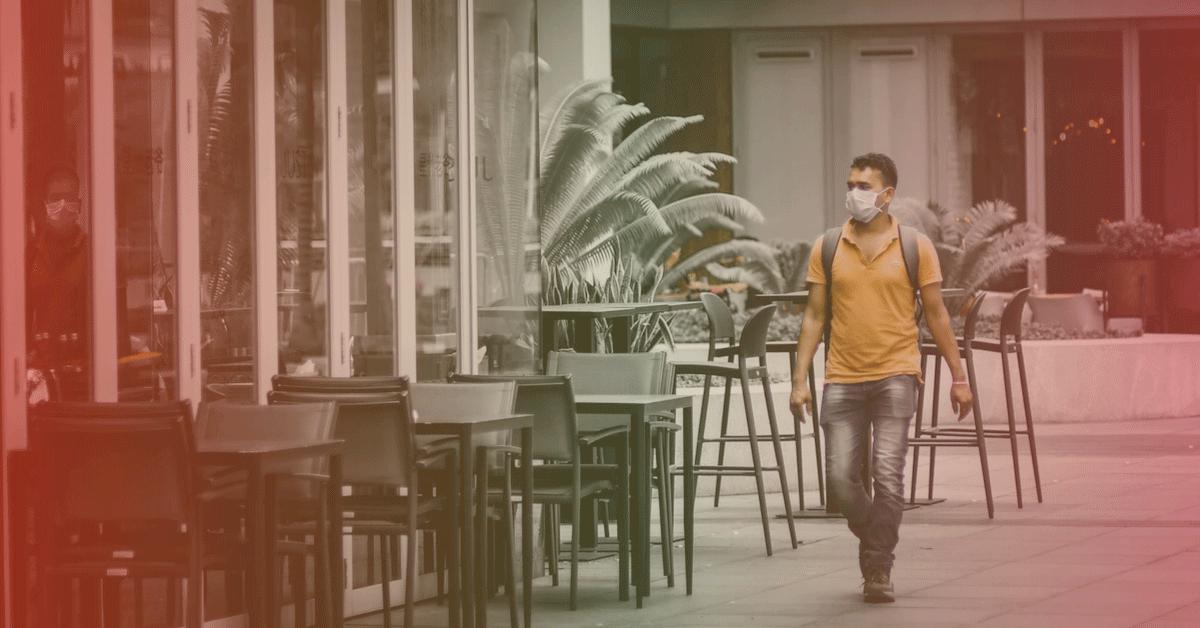As the rainy season began, Metro Manila also welcomed more relaxed quarantine measures when the government introduced the general community quarantine (GCQ) to the metro last June 1. What does this new, less strict quarantine mean for us Metro Manila residents?
The GCQ was enacted to further power up the economy after more than two months of dormancy, as well as to test the transition to the “new normal” once the COVID-19 pandemic is controlled. After the first week of GCQ here in Metro Manila, here’s what we know about the new guidelines and how the metro is responding to this new reality.
More industries open: Category I to III
In the bid to restart the economy, more and more establishments are being allowed to operate under the general community quarantine. Full operation of different industries is allowed under the GCQ, compared to the 50% capacity under the previous modified enhanced community quarantine (MECQ).
Aside from the essential industries like health care and retail establishments (Category I), the GCQ also allows the full capacity of Category II establishments like manufacturing and supply chains, public and private construction projects, BPOs, real estate activities, financial services, legal and accounting sectors, media production, and administrative support.
More mall establishments (Category III) are now permitted to operate at full capacity like clothing stores, hardware stores, electronics stores, office supplies stores, and mall-based government services. Restaurants remain available only for take-out and delivery services only.
Since June 7, barbershops and salons are now allowed to operate at 30% capacity. After two weeks, this can be increased to 50%. However, only haircutting will be allowed, while facials, nail services, and manicure services are still prohibited due to difficulties in enforcing physical distancing measures.
Other establishments considered leisure (Category IV) are still unallowed under the GCQ. This includes gyms and sports facilities, cinemas, bars and pubs, libraries, museums, and tourist destinations.
More flexible stay-at-home measures
With the economy almost at full capacity, more people are allowed to go out of their homes, particularly workers from the different industries operating under the GCQ. Stay-at-home measures are still imposed but only on vulnerable persons, like senior citizens, youths under 21 years old, pregnant women, and sick individuals.
Quarantine passes are no longer needed to go out, except when leaving a barangay that is considered a critical or buffer zone and high-risk areas. Curfews will still be imposed depending on the ordinances by the local government unit (LGU). Exempt from the curfew are frontliners and individuals coming home from work.
More forms of outdoor exercise and activities are allowed under the GCQ. Aside from jogging, running, and biking, non-contact sports like tennis, badminton, swimming, range shooting, equestrian, and skateboarding are now permitted. Health and precautionary measures must be practiced at all times.
More modes of transport available: MRT, P2P buses
Expecting the influx of individuals going to work under the GCQ, more modes of transport have been permitted to operate. Aside from private vehicles like cars and motorcycles, some public and high-capacity modes of transportation are now back in operation. This includes point-to-point buses (P2Ps), taxis, transport network vehicle services, and bus augmentation. Train systems like the MRT are also running but only at 13% capacity.
Starting June 22, public utility buses, UV express, and modern jeepneys will also be allowed to operate. Traditional jeepneys will be allowed if the other modes of transport are not sufficient. Bicycles are also a popular choice, as setting up bike lanes in major avenues like EDSA is being considered by the government.
The Department of Transportation is also planning to implement a rationalized bus route system across Metro Manila for the GCQ, bringing down the number of routes from around 100 to 31. This includes having dedicated bus lanes from North EDSA to SM Mall of Asia in Pasay City.
Same level of health and precautionary measures
NCR’s downgrading to GCQ is not a signal to forget about the COVID-19 pandemic. Even as some restrictions have been relaxed and more establishments are now back in business, precautionary and social distancing measures are still to be strictly followed at all times.
Mandatory wearing of face masks, maintaining a safe one-meter distance, frequent hand sanitation, and proper cough etiquette are habits that we must always carry with us as we transition into this new normal. Otherwise, we risk starting a new wave of the pandemic that will be much harder for our country’s health and economy to recover from.
As we continue to fight the coronavirus and navigate this new normal, it is important to constantly be cautious and informed of the quarantine guidelines in your area which are set up to ensure your and everyone else’s safety. If everyone does their small part of following social distancing measures and quarantine guidelines, we can definitely fast-track our pandemic response and protect all members of the community.
